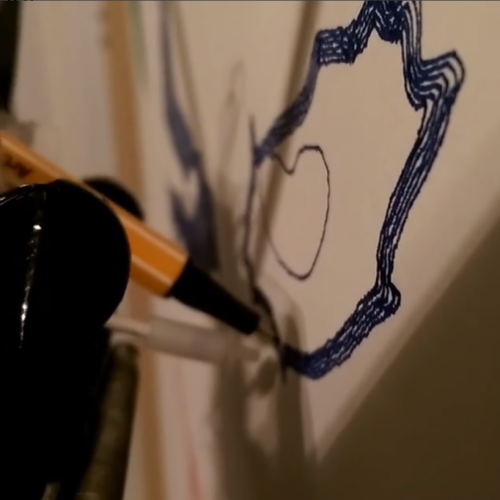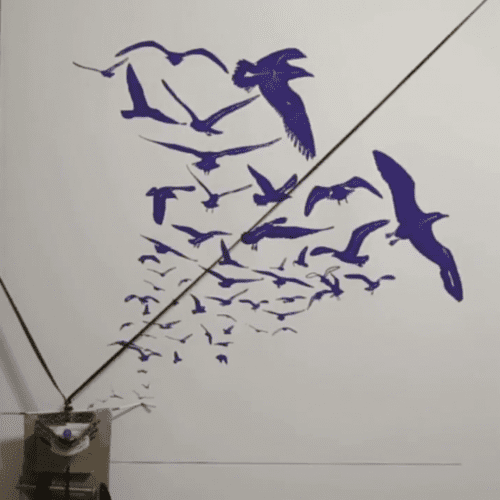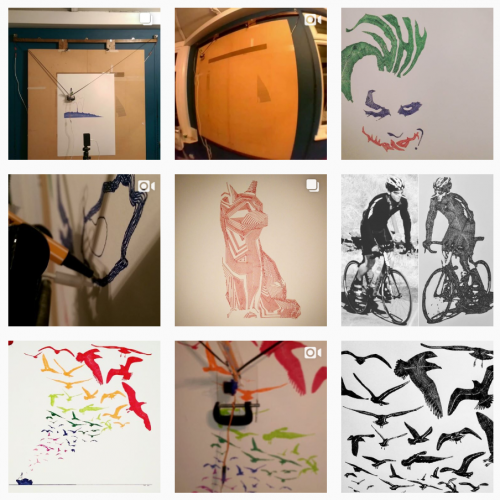A hanging plotter, also known as a polar plotter or polargraph, is a machine for drawing images on a vertical surface. It does so by using motors to control the length of two cords that form a V shape, supporting a pen where they meet. We’ve featured one on this blog before: Norbert “HomoFaciens” Heinz’s video is a wonderfully clear introduction to how a polargraph works and what you have to consider when you’re putting one together.
Today, we look at Inky Lines, by John Proudlock. With it, John is creating a series of captivating and beautiful pieces, and with his most recent work, each rendering of an image is unique.
An evolving project
The project isn’t new – John has been working on it for at least a couple of years – but it is constantly evolving. When we first spotted it, John had just implemented code to allow the plotter to produce mesmeric, spiralling patterns.
But we’re skipping ahead. Let’s go back to the beginning.
From pixels to motor movements
John starts by providing an image, usually no more than 100 pixels wide, to a Raspberry Pi. Custom software that he wrote evaluates the darkness of each pixel and selects a pattern of a suitable density to represent it.
The two cords supporting the plotter’s pen are wound around the shafts of two stepper motors, such that the movement of the motors controls the length of the cords: the program next calculates how much each motor must move in order to produce the pattern. The Raspberry Pi passes corresponding instructions to two motor circuits, which transform the signals to a higher voltage and pass them to the stepper motors. These turn by very precise amounts, winding or unwinding the cords and, very slowly, dragging the pen across the paper.
John explains,
Suspended in-between the two motors is a print head, made out of a new 3-d modelling material I’ve been prototyping called cardboard. An old coat hanger and some velcro were also used.
(He’s our kind of maker.)
Unique images
The earlier drawings that John made used a repeatable method to render image files as lines on paper. That is, if the machine drew the same image a number of times, each copy would be identical. More recently, though, he has been using a method that yields random movements of the pen:

This method means that no matter how many times the polargraph repeats the same image, each copy will be unique.
A gallery of work
Inky Lines’ website and its Instagram feed offer a collection of wonderful pieces John has drawn with his polargraph, and he discusses the different techniques and types of image that he is exploring.
They range from holiday photographs, processed to extract particular features and rendered in silhouette, to portraits, made with a single continuous line that can be several hundred metres long, to generative images spirograph images like those pictured above, created by an algorithm rather than rendered from a source image.
Website: LINK


